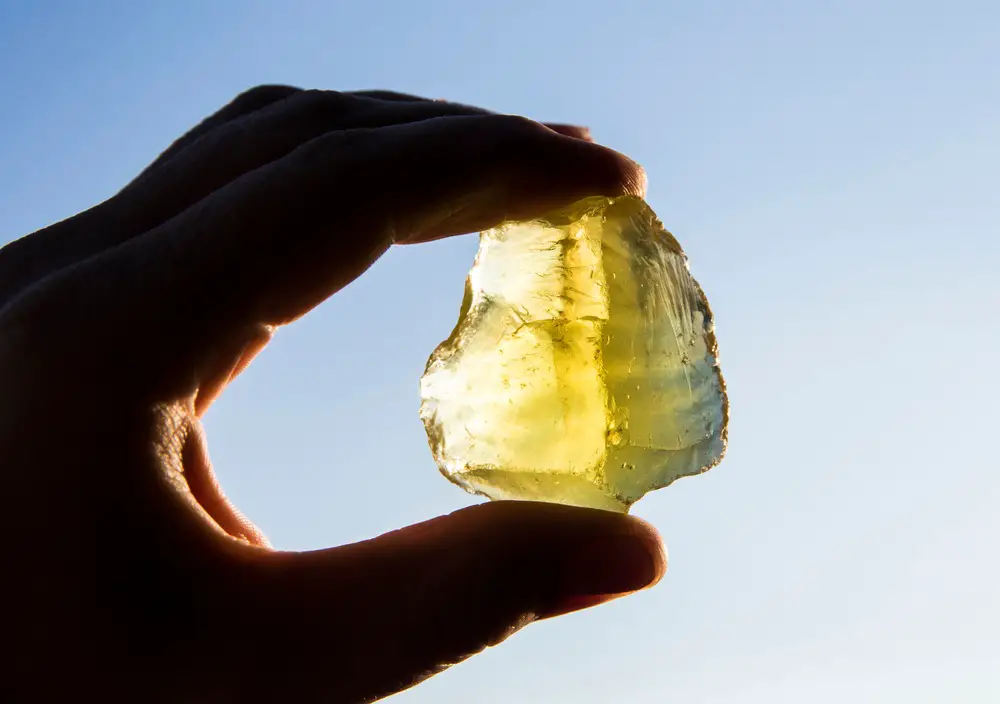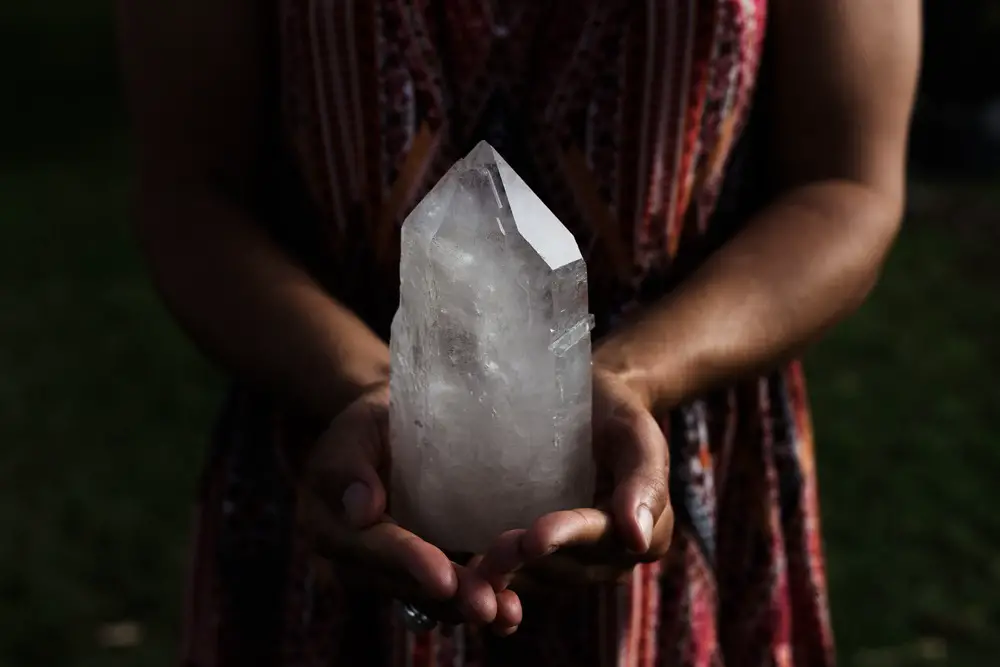Although many stones and crystals can be charged through the rays of the sun, there are actually quite a few of these that shouldn’t be left out in the sun’s ultraviolet light.

You might have recently started exploring the powers of crystals, or you may be a seasoned student; either way, looking into how to properly care for, handle and store your crystals is especially important if you would like them to be effective in the ways that you need.
Believe it or not, certain crystals can fade if they’re left in the sun, losing a lot of their beauty. They can sometimes even become brittle, which may lead to them breaking.
As a general rule, you should avoid using the sun to cleanse any stone or crystal for more than 12 hours, as this is almost sure to cause damage.
Certain crystals can withstand short amounts of time in the sun, whereas other crystals can experience longer. It is important to understand how long this is to avoid damaging your crystals.
If you would like to avoid this happening to any of your crystals, then carry on reading! We’ll discuss the crystals that can be exposed to the sun, as well as the crystals that are better off avoiding direct sunlight.
Which Crystals Can I Display In The Sun?
If you enjoy the look of your crystals glistening in the sunlight that floods through your home, don’t worry! You can still enjoy the beauty of your crystals, provided that you make sure to choose the ones that are able to withstand the sun.
Many crystals will look the same when left in sunlight, however, we are specifically discussing crystals that are often used for their healing and meditative properties. These include:
- Carnelian
- Jade
- Amber
- Lapis Lazuli
- Morganite
- Black Onyx
- Peridot
- Black Tourmaline
- Sunstone
- Howlite
- Malachite
- Black Obsidian
- Labradorite
- Moonstone
We’ll go into detail about some of these below.
Labradorite
Labradorite is a metallic stone, with notes of yellow, blue, and green amongst its largely dark natural color. As this stone is so dark, it’s possible to leave these stones in the sun for extremely long lengths of time without noticing a difference.
This stone will work to both protect and balance your aura. Labradorite is also good at helping you to further tap into your intuitive senses.
Jade
Jade was often used in ancient architecture, so it should come as no surprise that this stone is particularly good at retaining its beautiful, deep green color when exposed to direct sunlight.
Jade is known for its protective abilities – it repels any negative intentions towards you. If you have a jade stone, your life may seem to become more harmonized.
Black Obsidian
The purifying black obsidian is actually made of volcanic glass. Due to its naturally-occurring, dark color, your black obsidian shouldn’t fade any time soon. You can rely on black obsidian for its purifying qualities, as well as to enhance both your psychic abilities and manifestation abilities.
Carnelian
This is a stabilizing stone. Carnelian stones are an orange color. Stones that are this color don’t tend to change if left in direct sunlight, so carnelian doesn’t suffer any adverse effects in the sun, either.
Carnelian is really useful for stirring up motivation, and can also be great for inspiring creativity!
Black Onyx
Black onyx has a very deep, dark color, meaning that it is well protected from fading in the sun. This stone has grounding properties and can ward off negative energy. You can also use black onyx to manifest your intentions!
White Howlite
Howlite has balancing properties. White howlite, as indicated by its name, doesn’t have a color. This means that it isn’t able to fade in the sun, and can be left out in sunlight without any noticeable change.
Howlite is known to be good at relieving pain and stress, as well as helping to reduce anger.
What Happens If I Leave My Selenite Crystal In Direct Sunlight?
The clear-white, self-cleansing selenite crystal can be found in caves in Madagascar and Mexico. Selenite crystals are very popular for their cleansing abilities and they are quite often used to cleanse stones and crystals other than themselves.
Selenite crystals don’t need to be cleansed and charged as frequently as other crystals that might seem quite similar, such as clear quartz.
This is due to its self-cleaning properties – whilst cleansing can be beneficial every so often, it’s good to avoid doing this too frequently or for too long.
When cleansing, avoid placing it on a windowsill that receives direct sunlight for more than four hours.
A selenite crystal won’t change in appearance if you leave it there for a short amount of time, however any longer than four hours may mean that your crystal loses some of its shine, and takes on a faded appearance.
Luckily, there are some things we can do to avoid this!
Tip One – Set A Timer
It may seem obvious, but it’s worth mentioning just in case – set a timer for three hours. This means that you’ll receive a nice little reminder to go and get your selenite crystal before it starts to fade.
Tip Two – Avoid Direct Sunlight
Selenite crystals shouldn’t really be placed in direct sunlight. This is because indirect sunlight is more than enough to cleanse this crystal, and direct sunlight might damage it because of its strength.
This doesn’t mean you have to avoid sunlight altogether – but try to make sure that you aren’t placing your selenite crystal anywhere that receives too much. Choose a sunny day to place your selenite on a shelf, but make sure that it’s not receiving any direct rays.
Tip Three – Moonlight
It’s completely understandable if you would like to prevent any damage to your beautiful selenite crystal by not cleaning it in the sun at all.
Luckily, you can also use the power of the moon to cleanse your crystal, allowing you to avoid the sun completely!
The moon gives off very high-vibrational energy which the selenite crystal resonates with extremely well, so placing your selenite on a windowsill at night will allow it to benefit from the power of the moon.
Just make sure to remove it in the morning to avoid sun damage in the daytime.
Tip Four – Sage
Sage has cleansing properties, meaning you can also use this as an alternative to sunlight if you would like to cleanse your selenite crystal. Sage will cleanse your selenite of any negative energy that it may be retaining.
What Crystals Shouldn’t I Leave In Direct Sunlight?

A huge amount of crystals are actually photo-sensitive, because of the way that they were formed. Pretty much all crystals are created underground through natural processes, and they do not come into contact with any sunlight.
This means that that they are sensitive to sunlight, and a lot of them don’t mix with it very well at all. It’s always best to avoid leaving your crystals in the sun, otherwise, you risk damaging their beautiful color and properties.
To give you an idea of the types of stones that are usually photosensitive, we have listed a few below.
Topaz
Whilst it will take topaz a little longer to fade in sunlight than other stones, you should still avoid leaving this stone in the sun for more than 8 hours.
Yellow topaz can suffer some huge changes in particular, with direct sunlight causing it to turn a red-brown color.
Quartz
The quartz family includes many different types of quartz, such as the well-known rose quartz, and the beautiful, yellow citrine.
Both citrine and rose quartz can suffer from fading when left in the sun for more than four hours, losing their beautiful colors.
The same can be said for many other types of quartz, as too much time in the sun can leave them indistinguishable from clear quartz.
Fluorite
The beautiful purple/green fluorite can have strong reactions to sunlight, due to the calcium fluoride that this stone is made of.
Ten minutes in the sun is more than enough time to cause damage to this stone, as it can overheat, which can also lead to it cracking.
Celestite
Celestite is a crystal made up of strontium sulfate. It’s known for its gorgeous blue color, which is also what the name of this crystal derives from.
When left in the sun for an excessive amount of time, the slight blue color that this crystal has can change to white, as a result of the bleaching effect often caused by the sun’s rays.
This means that you should avoid leaving your celestite in the sun, as any sun damage will also cause your celestite to become more fragile than it already is, leading to breakages.
Aquamarine
Aquamarine is known for its beautiful blue color. Unfortunately, exposure to direct sunlight can cause aquamarine to fade. This crystal can lose its color quite quickly, turning white if left in the sun for more than two hours.
Opal
Opal is known for its beautiful holographic sheen. Unfortunately, when opal is exposed to sunlight it can lose this sheen, so this should always be avoided.
Amethyst
Amethyst is a type of quartz, however, due to its popularity, it is worth discussing this beautiful stone specifically.
Amethyst gets its gorgeous purple color from the iron it contains, alongside both silicone and oxygen.
As previously mentioned, however, quartz is known to fade when exposed to the sun, and as a result, you should avoid leaving your amethyst in sunlight for too long.
Other similar crystals, such as ametrine and amegreen can also suffer damage from the sun, meaning that you should avoid cleaning them for too long or in direct sunlight.
Transparent/Opaque
As an easy rule to remember, for the most part, you know that your stone or crystal is safe to be left in the sun when it is opaque, without causing any noticeable damage.
On the other hand, translucent or transparent crystals, such as quartz, will sustain damage if left out in the sun, meaning that this should be avoided.
If Your Crystal Is Photosensitive, Then You Can Expose It To Sunlight For A Maximum of Three Minutes Without Noticing Any Damage.
My Crystal Faded Because It Was Left In The Sun – What Do I Do?
If you forgot to remove your crystal from direct sunlight a little too late, don’t panic – it still works. Whilst it may have lost its color, luckily, crystals and stones don’t lose their properties of vibrations, even if they break somehow.
Why Has My Stone Or Crystal Suddenly Developed A Crack?
If you’re not too sure why your crystal has broken, but you came across a crack on it suddenly one day, it may be worth considering that this is because your stone or crystal has undergone a shift in energy.
Energy shifts can occur in crystals when your energy becomes incompatible with your stone or crystals’ energy.
This doesn’t mean that your crystal can’t be used anymore – however, it is probably best that you pass it on so that it can be used by someone else, as you might have outgrown each other.
If your crystal falls apart, you can decide to keep these pieces with the knowledge that your crystal’s energy will flow between the space created by the crack.
Whilst sometimes a crystal with a crack might cause some concern, for the most part, this is nothing to worry about – it’s just time for both you and the crystal to move on from one another.
My Crystal Faded Without Being Exposed To Sunlight – Why?
Not all fading is caused by sun damage – some stones and crystals will just fade naturally as time passes. If you notice a very slight color fade, this may be what is happening, meaning that you can rest assured that the color fade is not your fault.
